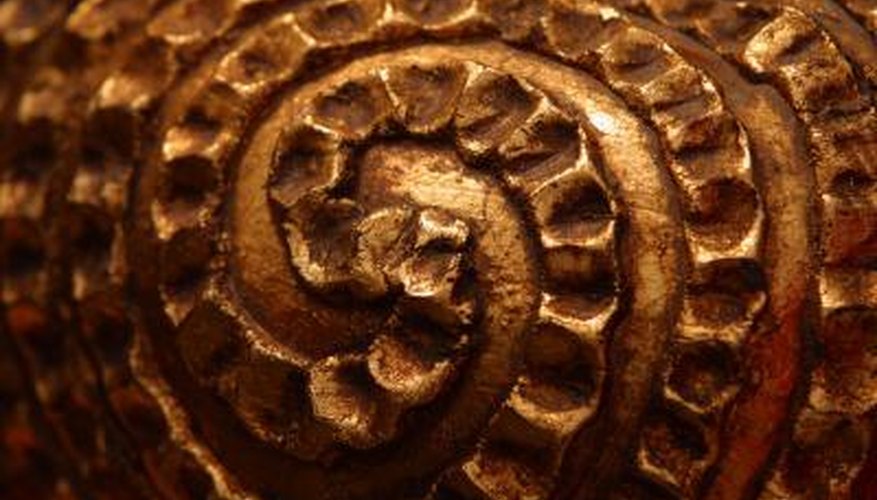Bronze, an alloy of copper and tin, is neither brittle like tin nor quite as soft as copper. Most bronze is used today for hammers, wrenches and mallets in areas containing flammable vapours and high explosives because it does not generate sparks when colliding with hard surfaces. Many sculptors still choose bronze because it picks up fine details when cast and shrinks when set, making it easy to remove from casts. Bronze, however, does have a few disadvantages.
Expense
Bronze is more expensive than brass and steel but less than nickel-base alloys. This is due primarily to its copper content. Pete Bowie, a bronze sculpture artist, says that the silicone bronze that he uses has a content composed of 95 per cent copper, and in the last few years the price of copper has risen 500 per cent from $.75 to £2.20 per pound.
Deterioration
Bronze has poor resistance to ammonia and ferric compounds and cyanides. Dirt and dust can also eat into its surface. Acid in bird droppings and concentrations of chemical agents in animal excretion also aids in corrosion and deterioration in sheltered areas of bronze works. A combination of sulphur and chlorine in a moist atmosphere is the most significant causes of deterioration.
- Bronze has poor resistance to ammonia and ferric compounds and cyanides.
- A combination of sulphur and chlorine in a moist atmosphere is the most significant causes of deterioration.
Core Migration
When a bronze piece is cast in a mould, it has a non-bronze core usually made of plaster-of-Paris or gypsum. Sometimes these cores are left in place accidentally. This material then makes its way through the bronze and in time finds its way to the surface, manifesting as tiny white spots which enlarge over time and must be removed by bronze restoration experts.
Disease
A sudden appearance of small areas of light green, rough spots on a piece of bronze indicates the presence of Bronze Disease. This disease, equivalent to rust in iron-based metals, occurs when oxygen and chloride combine in a moist environment to make hydrochloric acid. This acid forms copper and tin chlorides which in turn break down the bronze. Uncontrolled, this process will eventually destroy the bronze.
- A sudden appearance of small areas of light green, rough spots on a piece of bronze indicates the presence of Bronze Disease.
- This acid forms copper and tin chlorides which in turn break down the bronze.
Soft Metal
Because of its softness, bronze does not make sturdy weapons. It also cannot hold an edge well. During the Bronze Age, bronze swords were used primarily for stabbing but even then tips would bend on impact and require straightening.
Weight
Although bronze is lighter than steel by about 10 per cent, comparing bronze to iron and other metals depends on the composition of the materials used to make the bronze. Case in point, bronze containing 8 to 14 per cent tin runs from 7400 to 8900 kilograms per cubic meter while iron is 7850 kilograms per cubic meter.
